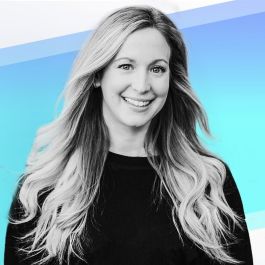With a valuation of $1.4 billion — and a recent $230 million Series F funding round — Yotpo is a unicorn in techspeak, but CEO and Co-Founder Tomer Tagrin likes to think of the company as a flamingo.
“We’re not building a unicorn,” Tagrin said. “We’re building a flamingo, a real animal, to provide real value to customers, employees and shareholders.”
After exploding onto the scene in 2011, the e-commerce marketing platform has skyrocketed by operating under the simple mindset of building products companies actually want and pivoting quickly to keep up with shifting user demands and needs.
In 2020, the company’s ability to iterate would be tested as COVID-19 swept the globe, wreaking havoc on large enterprise companies and mom-and-pop operations alike. While no industry was left untouched, brick-and-mortar stores acutely felt the crunch as in-person shopping became a risky venture overnight. It became clear that virtually every brand would have to invest in e-commerce tools to survive.
“I remember a year ago, we thought that there were good demographic fits for e-commerce,” Market Research Strategist Naama Brumer said. “Now, every category of every industry is a good fit for e-commerce. That leap was supposed to happen in a decade, but it happened in weeks.”
Because Yotpo’s expertise lies in e-commerce, it already had the technology needed to support customers’ digital transformations. But that didn’t mean the company could sit back and relax. Instead, Yotpo’s leaders knew they had to adapt their products to make it easier for brick-and-mortar stores to make the jump to digital channels, ensure consumers would continue turning to their favorite brands, and streamline communications between shoppers and retailers.
Every category of every industry is a good fit for e-commerce.”
In other words, Yotpo’s 10-year roadmap was about to be consolidated into one year. According to Tagrin, the company was able to successfully increase product offerings that were instrumental in helping businesses stay competitive during the pandemic.
But what will happen to Yotpo in a post-COVID-19 world?
In talking to Tagrin, Brumer and Senior Partner Manager Kaila Saller, Built In NYC learned that the team at Yotpo has gathered insights and built solutions that will provide value for brands long after the pandemic ends, and will allow them to continue to thrive in the new normal for commerce.
And while the world might look different on the other side of COVID-19, it appears Yotpo’s ambition will remain unchanged.
“We still have a 10-year vision, but now it’s bigger and more exciting,” Tagrin said. “We have a shot to become one of the most important companies in the history of e-commerce.”

What were some of the initial challenges you felt when COVID-19 first hit?
Senior Partner Manager Kaila Saller: We had customers that were traditionally brick-and-mortar starting to expand into e-commerce in order to survive — we saw huge growth there. We also had brands adding supplemental e-commerce sites to their business. We tried to be flexible when it came to the packages and promotions we were running to make it really easy for customers to join the platform and kickstart their e-commerce side.
For me personally, I rely on building relationships with our partners. Not being able to go to someone’s office and host a lunch-and-learn to educate them was a big challenge. But learning to pivot from those in-person experiences and bringing them online was just what these brands are trying to do. Keeping that same sort of engagement, through gift cards or virtual happy hours, has been huge.
Market Research Strategist Naama Brumer: We saw how some of our brands were succeeding by going online while some were really suffering. We had tools to help brands adjust quickly to the new normal.
It felt like we were humans first and businesspeople second. Everything was so chaotic, but I always felt very safe at work. There was visibility into what was going on, and a lot of over-communication which let us understand what was going on, what leadership was thinking and where we were going.
CEO and Co-Founder Tomer Tagrin: For many, it was the first time they were met with a crisis. We also saw anxiety in our customers as everything started shutting down.
It quickly became clear that e-commerce was booming during the pandemic.”
As a company, we didn’t rush into any decisions. We modeled a few scenarios on what would happen with our customers that have retail stores and how shutdowns would affect them, and therefore, us. That’s how we built a great plan that mapped out the areas we needed to focus on. It quickly became clear that e-commerce was booming during the pandemic.
What did this massive shift to e-commerce mean for Yotpo?
Tagrin: We saw accelerated growth from a lot of new types of businesses, like local shops moving from offline to online. A lot of companies were making the switch in a much more meaningful way — because that was the way to survive. As a result, the second quarter of 2020 was our best quarter ever. And then Q3 was our best quarter ever. Then Q4.
COVID-19 forced us to really look at ourselves honestly to understand what initiatives we believed in and wanted to double down on, and what we needed to cut. It meant consolidating the marketing stack for e-commerce brands and providing them with multiple products on the same platform.
We established new groups and began hiring in every position, firing on all cylinders. We saw our long-term vision become a mid-term division. We were able to build capabilities we thought would take 10 years. Our ambitions became bigger.
The second quarter of 2020 was our best quarter ever. And then Q3 was our best quarter ever. Then Q4.”
Brumer: I remember a year ago, we thought that there were good demographic fits for e-commerce. What happened instead is that everyone became online shoppers. Industries we had believed were a less obvious fit for e-commerce were now selling online. Now, every category of every industry is a good fit for e-commerce. That leap was supposed to happen in a decade, but it happened in weeks.
Through our consumer research, we’ve found that people of all ages and in every location have learned to enjoy the convenience of shopping online. So we’re trying to understand how to adapt the product, educate our brands and make the shopping experience between channels even more seamless and personalized.

What products or offerings did Yotpo build last year, and how will those be beneficial in the future?
Tagrin: At the beginning of 2020, we acquired a company in the SMS marketing space, which has been exploding for us. Yotpo is becoming one of the leading SMS marketing platforms in the world. We’ve also accelerated our loyalty product. We power some of the most sophisticated loyalty programs, and you’ll start seeing more from us in that area as we invest in the platform. The ability for us to connect loyalty with reviews and SMS is one of the things we’re so excited about — because it will all be on one platform.
There aren’t really any companies that are building one platform that encompasses everything, like we are.”
Saller: If you look at the current landscape, there are a lot of companies that do what we do, in terms of individual products. There are companies who focus on reviews, SMS, loyalty or insights — but there aren’t really any companies that are building one platform that encompasses everything like we are.
We also make the customer journey consistent through integrations between our products and by ensuring the data we’re gathering is being shared with our brands in a digestible, actionable way. That’s a major differentiator and an area where we’ll continue to expand.
What are some things you’ve learned during this time that you’ll be able to carry into the future?
Brumer: We’re living in a world where we need to ask ourselves “Is this real?” every day. When shoppers land on an e-commerce site, they need to know if they can trust it. Traditionally, that’s been done through reading customer reviews, but now people are asking if reviews are real. We’re working hard to understand how we can elevate user trust in reviews, which leads to higher conversion rates because people feel their money is safe.
We’re really trying to understand how the shoppers’ behavior has changed. And it’s changed dramatically.”
That’s just one insight we’ve learned about how people shop and how our products need to answer their knowledge gaps.
We’re also seeing a lot of multi-stage shopping. When consumers learn about new brands, they’ll research prices and read descriptions online, then go into the store to see these products in person. Then, they’ll buy them online. And sometimes, they’ll still go to pick up their items in-store!
When we try to understand how to adapt our products, we’re really trying to understand how the shoppers’ behavior has changed. And it’s changed dramatically.
You’ve already knocked out your 10-year roadmap in a short amount of time. Where do you go from here?
Tagrin: We talk to our customers and partners a lot. They’re the best lighthouse we could have. They have a sneak peek into the future — probably better than we have.
E-commerce is beyond the point of no return. So many new shoppers started to buy online, local businesses moved online and bigger brands are investing in online channels. That’s not going to change. But I don’t think it will always be a world where everyone stays home and nobody interacts with each other — that would be a very sad world. People miss interacting, and that’s something that will come back. Our goal is to build a reality where people can enjoy both worlds.
Saller: There’s always going to be something new. We need to stay on top of what those new trends are, who is facilitating them, and making sure that our offering as a platform can support new initiatives as we grow and change.
Being able to pivot is important. The only thing in life that’s certain is change. And if you can’t pivot and adapt and move around, it’s a problem. I think we’ve proven that we can make changes and we can help brands adapt.







